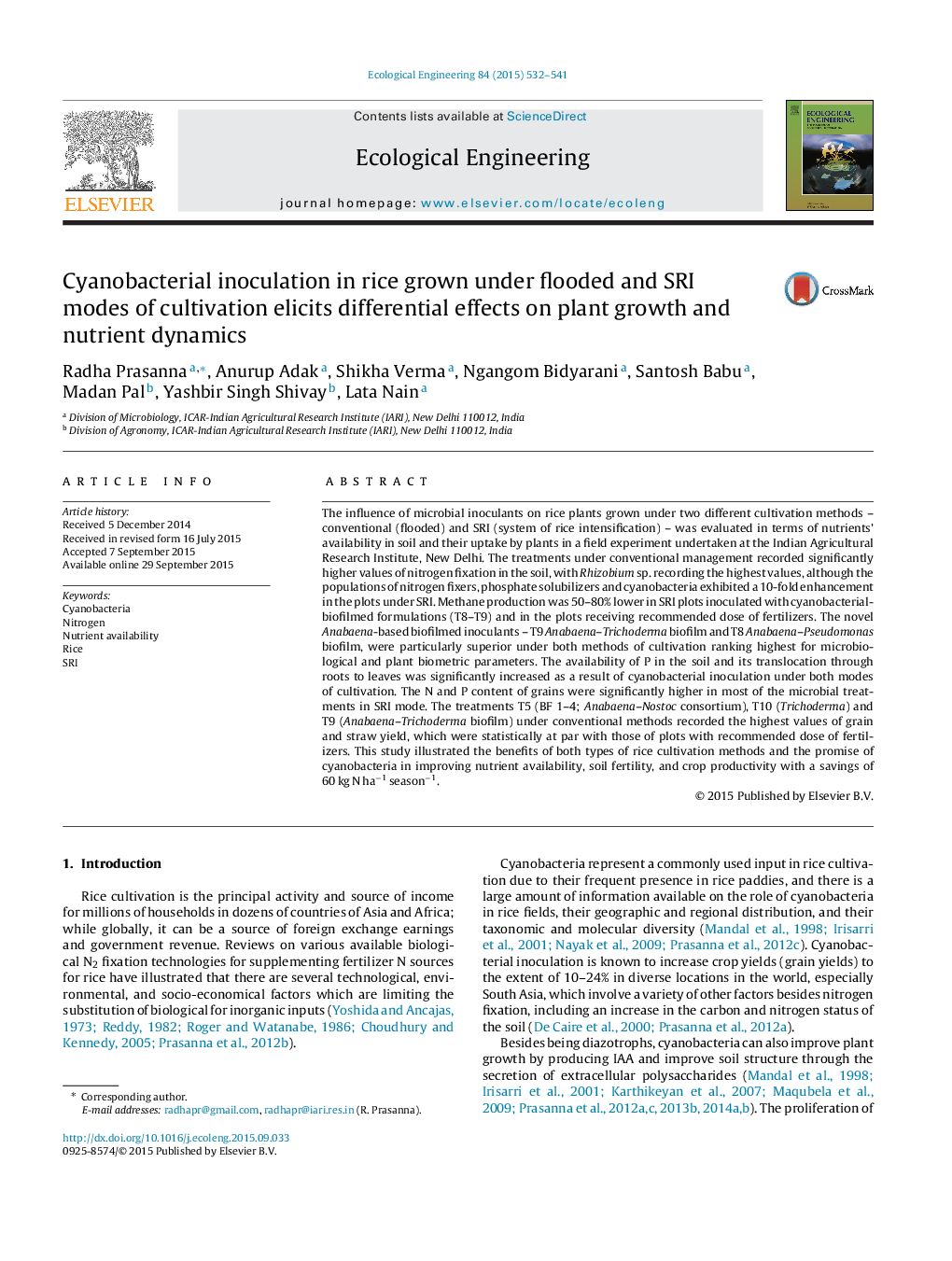| Article ID | Journal | Published Year | Pages | File Type |
|---|---|---|---|---|
| 4388823 | Ecological Engineering | 2015 | 10 Pages |
•Microbiological aspects of SRI and conventional flooded rice fields evaluated.•Reduced methane production and increased root volume recorded under SRI.•Nitrogen fixation and N availability 10–15% higher in flooded treatments.•Anabaena based biofilmed inoculants proved superior for both methods.•Promise of cyanobacteria based inoculants with 50% N savings.
The influence of microbial inoculants on rice plants grown under two different cultivation methods – conventional (flooded) and SRI (system of rice intensification) – was evaluated in terms of nutrients’ availability in soil and their uptake by plants in a field experiment undertaken at the Indian Agricultural Research Institute, New Delhi. The treatments under conventional management recorded significantly higher values of nitrogen fixation in the soil, with Rhizobium sp. recording the highest values, although the populations of nitrogen fixers, phosphate solubilizers and cyanobacteria exhibited a 10-fold enhancement in the plots under SRI. Methane production was 50–80% lower in SRI plots inoculated with cyanobacterial-biofilmed formulations (T8–T9) and in the plots receiving recommended dose of fertilizers. The novel Anabaena-based biofilmed inoculants – T9 Anabaena–Trichoderma biofilm and T8 Anabaena–Pseudomonas biofilm, were particularly superior under both methods of cultivation ranking highest for microbiological and plant biometric parameters. The availability of P in the soil and its translocation through roots to leaves was significantly increased as a result of cyanobacterial inoculation under both modes of cultivation. The N and P content of grains were significantly higher in most of the microbial treatments in SRI mode. The treatments T5 (BF 1–4; Anabaena–Nostoc consortium), T10 (Trichoderma) and T9 (Anabaena–Trichoderma biofilm) under conventional methods recorded the highest values of grain and straw yield, which were statistically at par with those of plots with recommended dose of fertilizers. This study illustrated the benefits of both types of rice cultivation methods and the promise of cyanobacteria in improving nutrient availability, soil fertility, and crop productivity with a savings of 60 kg N ha−1 season−1.
